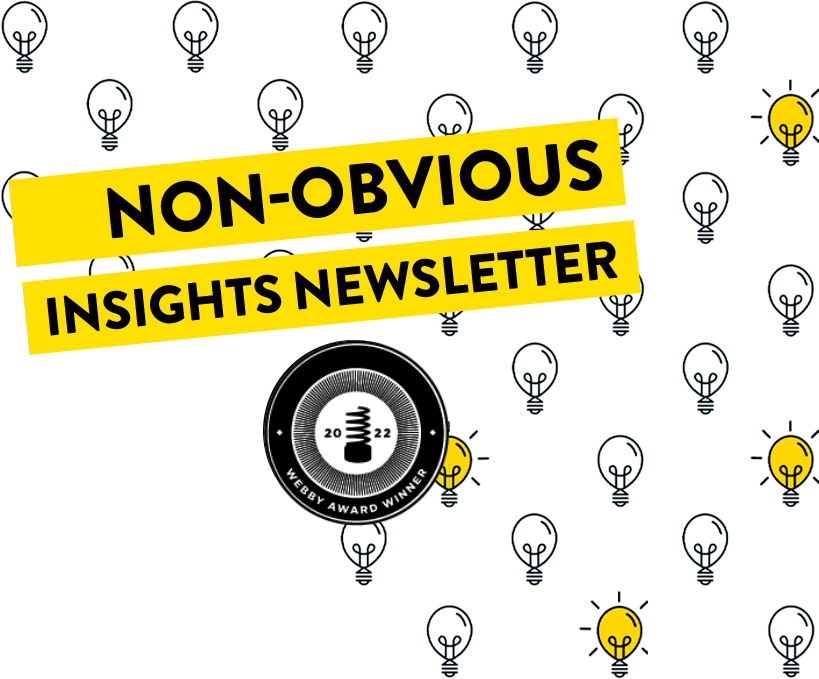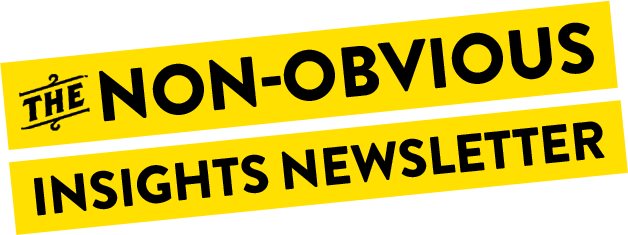Every week a temptation I’m forced to resist is filtering the stories I share with you by their recency. This is not a newsletter about breaking news, it’s about what I found most fascinating … and hopefully what you will too.
This week you’ll read about AI poisoning, an unnecessary use case for facial scanning, the growing global gender divide, and an unusual marketing campaign from a protein bar. You will also read about who lives inside a 90 million-year-old crater in Madagascar, the forgotten history of HTTP protocols, and how one Canadian podcaster makes true crime stories relevant again.
Stay curious,
A New Global Gender Divide Is Emerging For The First Time Ever
For all the research and articles you might have read about the habits and beliefs from one generation to the next, one assumption has remained surprisingly unquestioned: both men and women from any particular generation share a similar mindset. What separates Boomers from Millennials may be extreme but that shift applies relatively equally to anyone regardless of gender.
This week an op-ed piece in the FT suggested that Gen Z (a term generally referred to those currently under the age of 26) may be two generations, not one. The article features some surprising data points about the diverging beliefs of men and women across the globe and suggests some reasons for the divide:
The #MeToo movement was the key trigger, giving rise to fiercely feminist values … That spark found especially dry tinder in South Korea … but it serves as a warning to other countries of what can happen when young men and women part ways. Its society is riven in two. Its marriage rate has plummeted, and birth rate has fallen precipitously … the lowest of any country in the world.
In the US, Gallup data shows that after decades where the sexes were each spread roughly equally across liberal and conservative world views, women aged 18 to 30 are now 30 percentage points more liberal than their male contemporaries. That gap took just six years to open up.
If this shift continues, there are dangerous implications for everything from workplace collaborations to relationships and families of the future. For those who are part of this generation or watching this emerge, what do you see? Is this likely to explode into a full-blown gender divide and crisis at some point? Hit reply and let me know.
New RXBands Offer a Secret Stretch Code and a Marketing Case Study
Here’s something you probably haven’t seen before … a protein bar company launching a discount code promo that only appears once on an exercise band after it’s fully stretched. This clever stunt comes from RXBAR, which is partnering with three Instagram fitness influencers to give away the bands and free prizes too. It’s a fun and quirky campaign but also a great reminder of the predictable elements of a campaign that stands out and gets attention.
The idea is new and easy to explain. The timing is great, as people struggle to maintain their New Year’s resolutions and January comes to a close. The branding is perfect – RXBands from RXBAR. And it’s a perfect use of influencer marketing, in a category where people pay a lot of attention to influencers and they offer a deep personal connection to a large audience. Lots of useful marketing lessons to take away from this simple but smart campaign.
Is Poisoning AI The Best Way for Artists to Fight Back?
In less than a week since the AI poisoning tool known as Nightshade was made available online for free, more than 250,000 people have downloaded and started to use it. Artists and creators can use the tool to tag their images at the pixel level which is undetectable to the human eye, but wreaks havoc on AI learning models. It is part of an effort known as the Glaze Project, designed to “increase the cost of training on unlicensed data and making licensing images from creators a more attractive option for AI companies.”
Aside from the emotional appeal for victimized artists feeling like they finally have a way to fight back, the idea of poisoning AI data sets could actually work because of how difficult it is to remove these poisoned images from the model once ingested. The problem is volume. As Glaze Project founder Zhao says, you “would need thousands of poisoned samples to inflict real damage on larger, more powerful models, as they are trained on billions of data samples.” So, for now, the solution may be more of a feel-good tool than a real digital protector of creative work … but it’s a start.
New Program at Supermarkets Will Use Facial Scanning to Check Age
Welcome to a case study on why facial scanning is a bad idea. Supermarkets in the UK have been experimenting for the past year with technology that estimates the age of shoppers by scanning their faces at checkout. Apparently “Tesco, Asda, Morrisons and Co-op have already successfully trialed the technology which allowed anyone that is estimated to be over 25 to buy their alcohol without further checks.”
So the first question that comes to mind is what problem exactly is this technology meant to solve. The inconvenience of someone over 25 getting carded? Or the risk that younger people might use fake IDs? Or to speed up checkout? This program pretty clearly would fail on all three metrics.
The future that’s easy to imagine instead is customers frustrated that AI has judged their age incorrectly and longer queues at supermarkets as equally frustrated employees are forced to deal with the backlash. The entire idea seems illogical and doomed to fail, but perhaps I’m missing something? If I am, please let me know. It’s hard to see why anyone would think this was a good idea.
The Dreaded 404 Page and Its Little Understood Cousin: The 402 Error
Did you know that back in the earliest days of the Internet, there were a list of error codes created for situations that the web’s first designers thought would be highly possible in the future? Of course, the dreaded 404-error is the one that most of us know well: page not found. It was ubiquitous among websites of the 90s and continues to be part of our online lives. For some, it has even offered a canvas for creativity as web designers have fun with it.
Far less known is the 402-error code, which was originally created for a potential web that never actually happened. This was the code meant to be returned if you visited a page that required a micropayment to access the content. Sadly, a dominant micro currency never really emerged, which made the idea that anyone might pay a fraction of a cent to read an article impossible. So, the 404-error become a pop icon and the 402 was forgotten. Not enough geeking out on internet protocols for you? Here’s the full list of all the http codes for your reading pleasure. And before you ask me if I included this story simply because this happens to be edition #404 of this newsletter, I’ll just say 444.
Even More Non-Obvious Stories …
Every week I always curate more stories than I’m able to explore in detail. Instead of skipping those stories, I started to share them in this section so you can skim the headlines and click on any that spark your interest:
- Inside Mark Zuckerberg’s Top-Secret Hawaii Compound
- Disney Just Reinvented the VR Treadmill with the Holotile
- Who Lives Inside This Hidden Crater in Madagascar? [Video]
- Why China Lost Interest in Hollywood Movies
- How A Pulitizer-Prize Winning Podcaster Gets People Listening to True Crime That Matters
How are these stories curated?
Every week I spend hours going through hundreds of stories in order to curate this email. Looking for a speaker to inspire your team to become non-obvious thinkers through a keynote or workshop? Watch my new 2024 speaking reel on YouTube >>
This Non-Obvious Insights Newsletter is curated by Rohit Bhargava.
Copyright © 2023 Non-Obvious, All rights reserved.
Get this newsletter directly in your inbox every Thursday! Subscribe here >>





